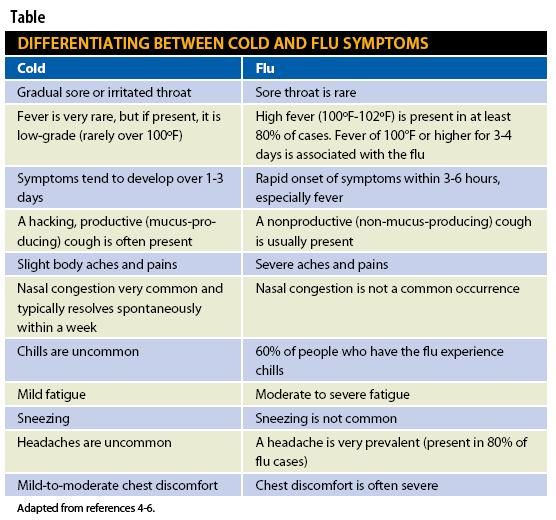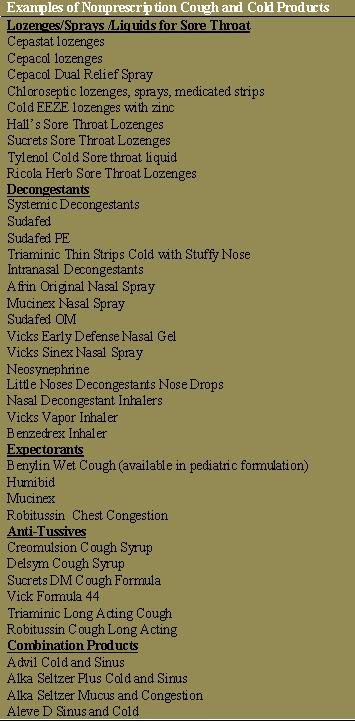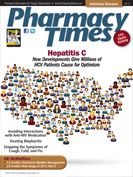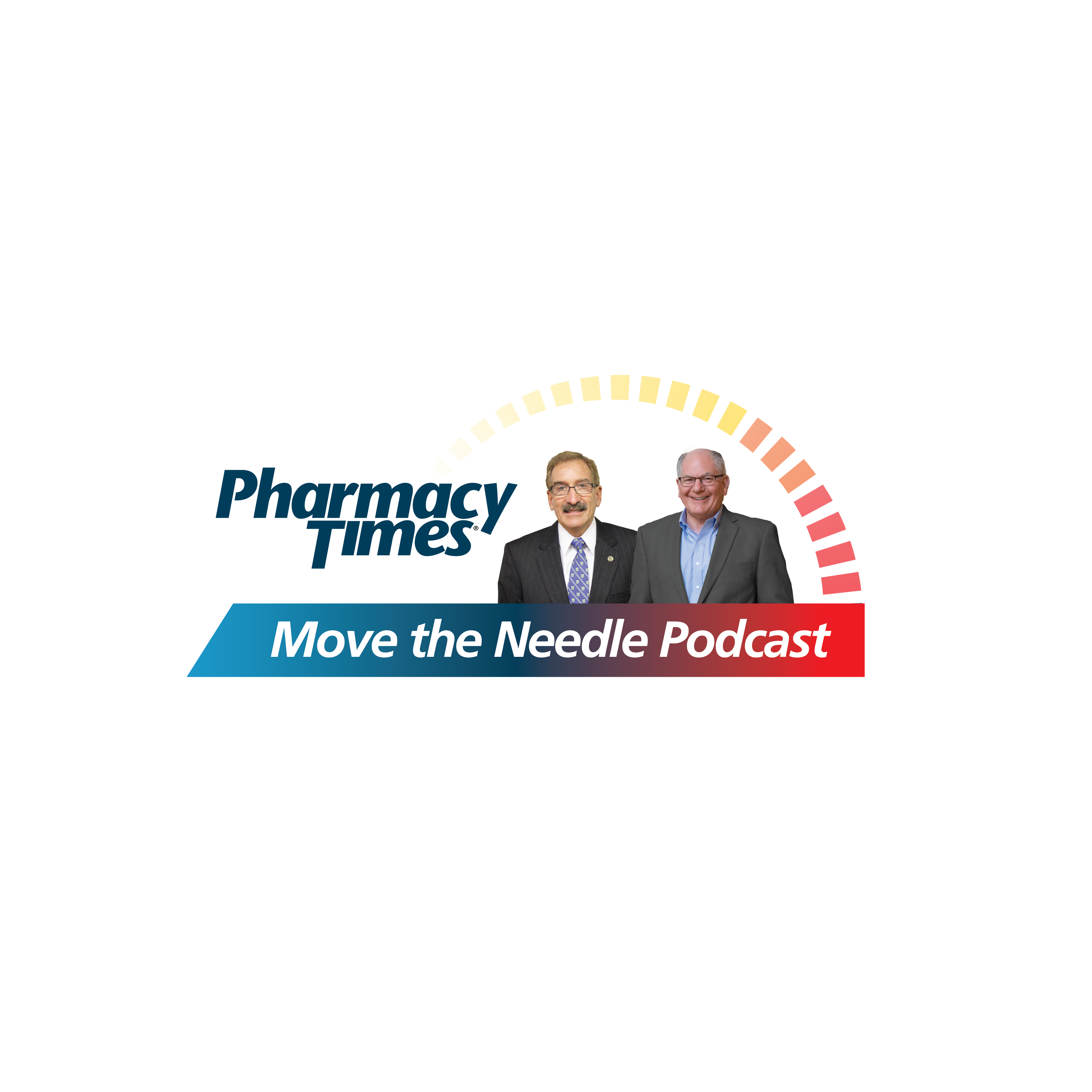Publication
Article
Pharmacy Times
Stopping the Symptoms of Cough, Cold,and Flu
Author(s):
When recommending OTC products for these common ailments, a careful patient assessment is an important first step.
When recommending OTC products for these common ailments, a careful patient assessment is an important first step.
Stopping the Symptoms of Cough, Cold, and Flu
Although there is no cure for the common cold, a quick scan of pharmacy shelves reveals a host of nonprescription products formulated to manage and treat its symptoms. Pharmacists are in a pivotal position to assist patients in the selection and proper use of these OTC products, and can provide patients with updates and changes regarding the products on the market.
The common cold is often considered the leading cause of physician office visits and absences from work and school. Typically, 1 billion colds occur annually, which makes colds 1 of the top 5 illnesses diagnosed in the United States. 1,2 According to the National Center of Health Statistics, an estimated 20 million days of school and 22 million days of work are lost due to the common cold each year.2
Telltale Symptoms
The signs and symptoms of the common cold are often confused with those of the influenza virus or other respiratory viruses. 1,2 The Table 3-5 lists the symptoms commonly associated with each condition. Although colds may occur throughout the year, the cold season in the United States typically occurs from late August through early April.

In general, patients may present with cold symptoms within 1 to 3 days after incubation.1,2 Sore throat is typically the first symptom to manifest, followed by nasal symptoms such as sneezing, rhinorrhea, and nasal congestion. Patients may also experience cough by day 4 or 5.1,2 Patients may also experience fatigue and a low-grade fever; however, colds rarely present with a fever greater than 100ºF.1,2
The average duration of the common cold ranges from 7 to 14 days.1,2
Influenza season typically occurs between October and May, with the peak of the flu season occurring between late December and March. 6 In a typical year, approximately 5% to 20% of the general population gets the seasonal flu.2 Patients typically experience flu symptoms rapidly and often present with a fever, body aches, dry cough, and extreme fatigue.1,3
Finding OTC Relief
Decongestants, antihistamines, expectorants, cough suppressants, and antipyretics/analgesics can help patients manage their cold and flu symptoms. Cough, cold, and flu products are available in many dosage forms, including liquids; tablets; caplets and capsules; orally disintegrating tablets; soft chews; nasal swabs, strips, and sprays; topical vapor patches; and dissolvable medicated strips. Many of these formulations provide convenient administration, accurate dosing, and easy-to-use drug delivery systems.
Factors to consider when selecting products include the patient’s symptoms, medical conditions, allergy history, and current drug regimen, as well as lifestyle and personal preferences. Products formulated for the diabetic patient population are free of sugar, alcohol, dextrose, sucrose, sorbitol, sodium, fructose, glycerin, and dyes. Products for patients with hypertension, such as Coricidin HP products (Schering-Plough HealthCare), are decongestant free.
Homeopathic and alternative medications, such as echinacea, high-dose vitamin C, and zinc, are marketed as shortening the duration of and/or preventing the common cold. Patients with medical conditions and those taking any other medications should always discuss the use of these products with their primary health care provider.
Colds and Kids
The proper use of OTC cold products in pediatric patients has been a topic of debate for many years. Currently, the FDA does not recommended the use of these products in patients younger than 2 years.1,7 Manufacturers have voluntarily updated their product labels to include this statement: “Do not use this product in children under the age of 4 years.” 1,7 Warnings are also included against the use of antihistamine-containing products for sedation purposes.1,7
Due to concerns about inaccurate dosing, the FDA released new guidelines for liquid nonprescription drugs in May 2011. The key recommendations include 1,8 :
1. Dosage delivery devices should be included for all orally ingested OTC liquid drug products.
2. Measuring devices should be marked with calibrated units of liquid measurement (eg, teaspoon, tablespoon, or milliliter) that are the same as the units of liquid measure specified in the directions for the product, and there should not be any unnecessary markings on the device.
3. Manufacturers should ensure that dosage delivery devices are used only with the products with which they are packaged.
4. Liquid measure markings on dosage delivery devices should be clearly visible and not obscured when the liquid product is added to the device.
Choosing a Decongestant
Decongestants are used to treat sinus and nasal congestion and are indicated for the temporary relief of nasal and Eustachian tube congestion and cough associated with post-nasal drip. 1 Pseudoephedrine and phenylephrine are common ingredients in systemic OTC decongestants. Both pseudoephedrine and phenylephrine have short half-lives, and peak concentrations for both agents occur 0.5 to 2 hours after oral administration.1
Common adverse effects associated with the use of oral decongestants include insomnia, restlessness, anxiety, nervousness, palpitations, and tachycardia.1 The use of decongestants may exacerbate certain medical conditions that are sensitive to adrenergic stimulation (ie, hypertension, diabetes, coronary artery disease, prostatic hypertrophy, and elevated intraocular pressure). 1 Patients currently on medication or those with medical conditions should be advised to consult with their primary health care provider before using any of these products. 1
Some decongestant products are combined with an antihistamine. Because antihistamines and decongestants interact with several medications and are contraindicated in various patient populations, pharmacists should screen for possible drug interactions or contraindications prior to recommending these products. For example, decongestants and antihistamines are contraindicated in those patients taking monoamine oxidase inhibitors. 1
OTC intranasal decongestants include short-acting ingredients such as ephedrine, epinephrine, levmetamfetamine, naphazoline, phenyleprhine, tetrahydrozoline, and long-acting decongestants such as oxymetazoline. 1 Patients should be reminded that the overuse of topical decongestants is associated with rhinitis medicamentosa (rebound congestion), and their use should be limited to 3 to 5 days. 1
Systemic Analgesics
Systemic analgesics are used for relief of pain, headache, and fever associated with the common cold and the flu. Caution should be used in patients with a history of gastrointestinal (GI) upset, renal or hepatic impairment, and those taking pharmacologic agents with known interactions with these agents. 1 Because many combination products contain analgesics such as aspirin, acetaminophen, ibuprofen, or naproxen, patients should be advised to always check the ingredients of cold medications to avoid therapeutic duplications, unnecessary drug use, possible drug—drug interactions, or contraindications.
An April 2011 report from the FDA’s Center for Drug Evaluation and Research found that due to different concentrations of liquid acetaminophen products, there was confusion that could lead to overdosing. 9 In an effort to avoid dosing errors, manufacturers of liquid acetaminophen products voluntarily changed nonprescription liquid acetaminophen formulations to 1 concentration of 160 mg/5 mL for all children younger than 12 years. 1,9 Concentrated infant drops (80 mg/0.8 mL; 80 mg/mL) began to be phased out in mid- 2011. 1,9 The less-concentrated 160-mg/5 mL liquid acetaminophen products for infants contain new dosing instructions and new dosing devices in the boxes.
Despite their discontinuation, some of the more concentrated infant products may still be in some homes or in distribution. For this reason, the FDA issued a warning to parents/caregivers to avoid potential dosing errors. 9,10 On December 22, 2011, the FDA released a consumer update urging parents to carefully read the labels of liquid acetaminophen marketed for infants to avoid administering the incorrect dose. 8-10
Silencing Cough
Oral antitussives, expectorants, and topical antitussives are indicated for the treatment and management of cough. These products are available as syrups, capsules, tablets, granules, medicated thin strips, liquid-filled capsules, topical creams, ointments, lozenges, vapor inhalants, and patches that contain the antitussive products camphor and menthol. 11

Guaifenesin is the only FDA-approved expectorant and is indicated for the symptomatic relief of acute ineffective productive cough. 10 Although the use of guaifenesin is not associated with any drug—drug interactions and is generally well tolerated, patients may report adverse effects such as nausea, vomiting, and GI upset. 11 FDA-approved nonprescription oral antitussives include codeine, dextromethorphan, and diphenhydramine. 11 At antitussive dosages, codeine is classified as a Schedule C-V narcotic and is available without a prescription in 33 states. 11 Codeine is indicated for the suppression of nonproductive cough caused by chemical or mechanical respiratory tract irritation. 11
Codeine acts centrally on the medulla to increase the cough threshold, and when used at antitussive doses, it has low toxicity and little risk of addiction. 11
The majority of nonprescription cough suppressants contain dextromethorphan, which is indicated for the suppression of nonproductive cough caused by chemical or mechanical respiratory tract irritation. 11 Nausea, vomiting, GI discomfort, dizziness, and constipation are the most common adverse effects associated with the use of dextromethorphan. 11
Diphenhydramine is classified as a nonselective first-generation antihistamine with significant sedating and anticholinergic properties. 11 It acts centrally in the medulla to increase cough threshold. 11 Diphenhydramine is indicated for the suppression of nonproductive cough caused by chemical or mechanical respiratory tract irritation.
Camphor and menthol are the only 2 FDA-approved topical antitussives. 11
Conclusion
Prior to recommending any of these products, pharmacists should always screen for potential allergy sensitivities, drug— drug interactions, and possible contraindications. To prevent medication errors, patients should always be reminded to read labels prior to administration, review ingredients to avoid therapeutic duplications, and always check the expiration dates prior to administration. Patients should be reminded to adhere to the recommended dosages, administration guidelines, and duration of use.
When administering these products to pediatric patients, parents/caregivers should be reminded to always use calibrated measuring devices when administering liquids and read all labels carefully prior to administering. Parents/caregivers should only give children those products manufactured specifically for the pediatric population, and should always consult their pediatrician or pharmacist when in doubt regarding the appropriateness or dose of the medication.
Pharmacists can also stress the importance of nonpharmacologic measures when treating cough, cold, and the flu, especially among the pediatric patient population. Vaporizers or humidifiers, saline nasal sprays such as Little Noses Saline Mist for children or Ocean Nasal Spray, or nonmedicated Breathe Right strips can help relieve symptoms. Obtaining adequate hydration and rest is also important.
Patients should be encouraged to seek medical attention from their primary health care provider if symptoms appear to worsen or linger, or if they experience high fever or signs of infection.
Patients should be reminded to get their annual flu vaccine and should be prompted to take preventive measures for potentially decreasing or preventing transmission, such as routine hand-washing, use of hand sanitizers when soap and water are not available, avoiding direct contact with an individual with a cold or the flu, and always sneezing or coughing into a tissue and not into the hand. PT
References
1. Scolaro K. Disorders related to colds and allergy. In: Krinsky D, Berardi R, Ferreri S, et al, eds. Handbook of Nonprescription Drugs. 17th ed. Washington, DC: American Pharmacists Association; 2011:1710-1810.
2. Common cold. National Institute of Allergy and Infectious Diseases website. www3.niaid.nih.gov/topics/commonCold. Accessed December 28, 2011.
3. Flu season. FluFACTS website. www.flufacts.com/about/season.aspx. Accessed December 28, 2011.
4. Is it a cold or the flu? National Institute of Allergy and Infectious Disease website. www.niaid.nih.gov/topics/flu/documents/sick.pdf. Accessed December 21 , 2011.
5. Cold and flu: what’s the difference? Tylenol product website. www.tylenol.com/page.jhtml?id=tylenol/cold/subfdiff.inc. Accessed December 27, 2011.
6. Flu symptoms. Tamiflu website. www.tamiflu.com/about/pc_flu.jsp. Accessed December 28, 2011.
7. An important FDA reminder for parents: do not give infants cough and cold products designed for older children. FDA website. www.fda.gov/Drugs/ResourcesForYou/SpecialFeatures/ucm263948.htm. Accessed December 28, 2011.
8. FDA issues final guidance for liquid OTC drug products with dispensing devices. FDA website. www.fda.gov/NewsEvents/Newsroom/PressAnnouncements/ucm254029.htm. Accessed December 28, 2011.
9. Know concentration before giving APAP to infants. FDA website. www.fda.gov/ForConsumers/ConsumerUpdates/ucm284563.htm. Accessed December 28, 2011.
10. New infant’s liquid APAP products hit store shelves. American Academy of Family Physicians website. www.aafp.org/online/en/home/publications/news/news-now/health-of-the-public/20111223infantacetamin.html. Accessed December 28, 2011.
11. Tietze K. Cough. In: Krinsky D, Berardi R, Ferreri S, et al, eds. Handbook of Nonprescription Drugs. 17th ed. Washington, DC: American Pharmacists Association; 2011:205-216.
Ms. Terrie is a clinical pharmacy writer based in Haymarket, Virginia.
References







